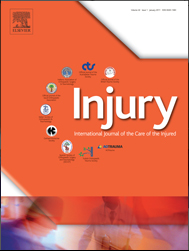
HAND & WRIST
Function and radiographic outcome of carbon peek and titanium locking plates similar for DRF
Injury. 2017 Oct;48 Suppl 3:S24-S2930 patients undergoing volar plate fixation for an AO type B or C displaced fracture of the distal radius were included in this study to compare two different plates. Patients were randomized to undergo the procedure using either Carbon-Peek volar locking plates or titanium volar locking plates. Follow-up was conducted over a 12-month period and patients were evaluated for forearm range of motion, hand grip strength, key pinch strength, the Disabilities of the Arm, Shoulder, and Hand (DASH) questionnaire and a visual analog scale. Dorso-palmar and lateral x-rays were also used to assess radiographic parameters. The results of this study at 12 months indicated no significant differences in functional outcome or radiographic outcome between the two plates.
Unlock the full ACE Report
You have access to {0} free articles per month.Click below to unlock and view this {1}
Unlock NowCritical appraisals of the latest, high-impact randomized controlled trials and systematic reviews in orthopaedics
Access to OrthoEvidence podcast content, including collaborations with the Journal of Bone and Joint Surgery, interviews with internationally recognized surgeons, and roundtable discussions on orthopaedic news and topics
Subscription to The Pulse, a twice-weekly evidence-based newsletter designed to help you make better clinical decisions
Exclusive access to original content articles, including in-house systematic reviews, and articles on health research methods and hot orthopaedic topics
Or upgrade today and gain access to all OrthoEvidence content for just $1.99 per week.
Already have an account? Log in


Subscribe to "The Pulse"
Evidence-Based Orthopaedics direct to your inbox.
{0} of {1} free articles
Become an OrthoEvidence Premium Member. Expand your perspective with high-quality evidence.
Upgrade Now












































































